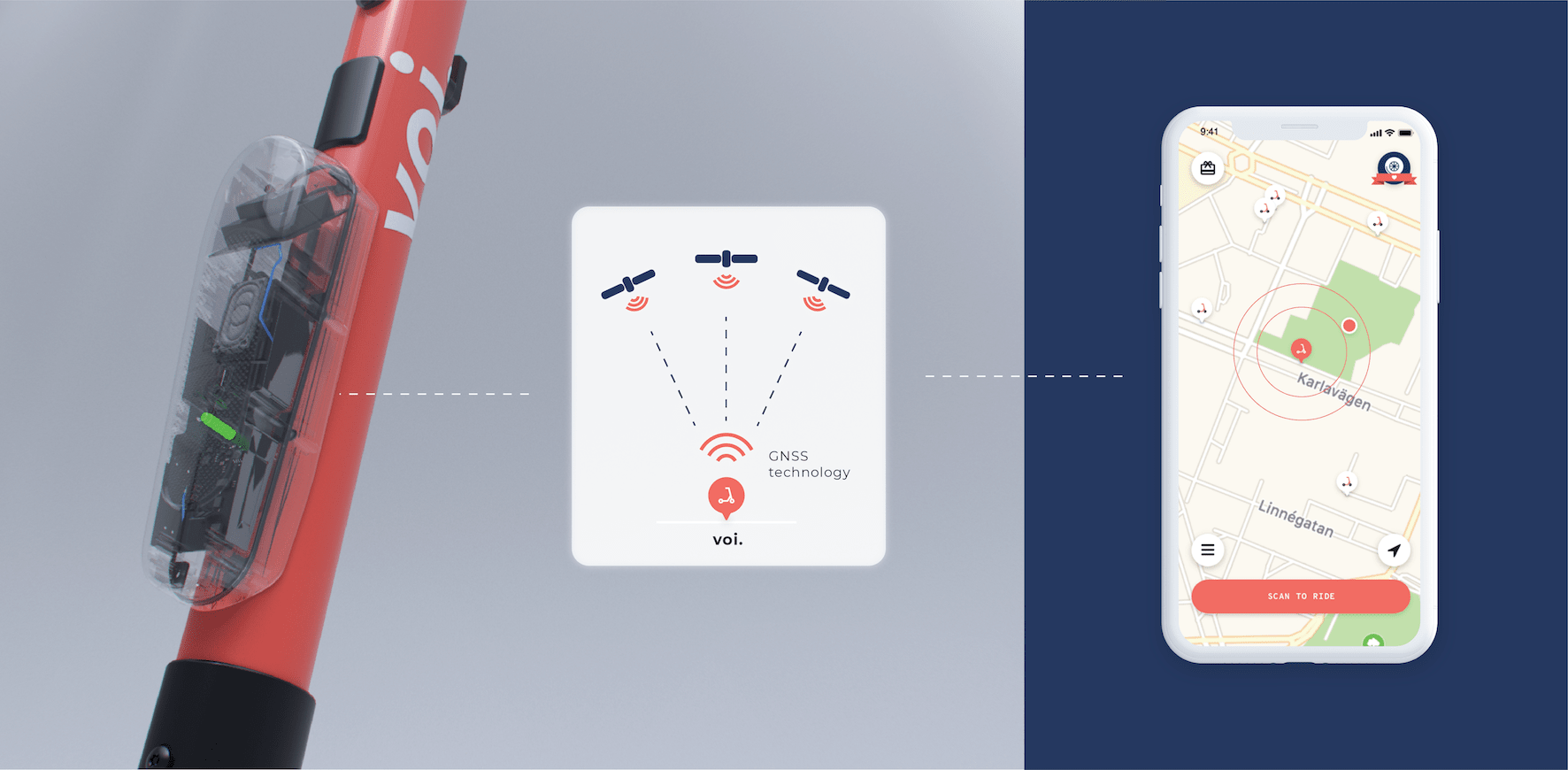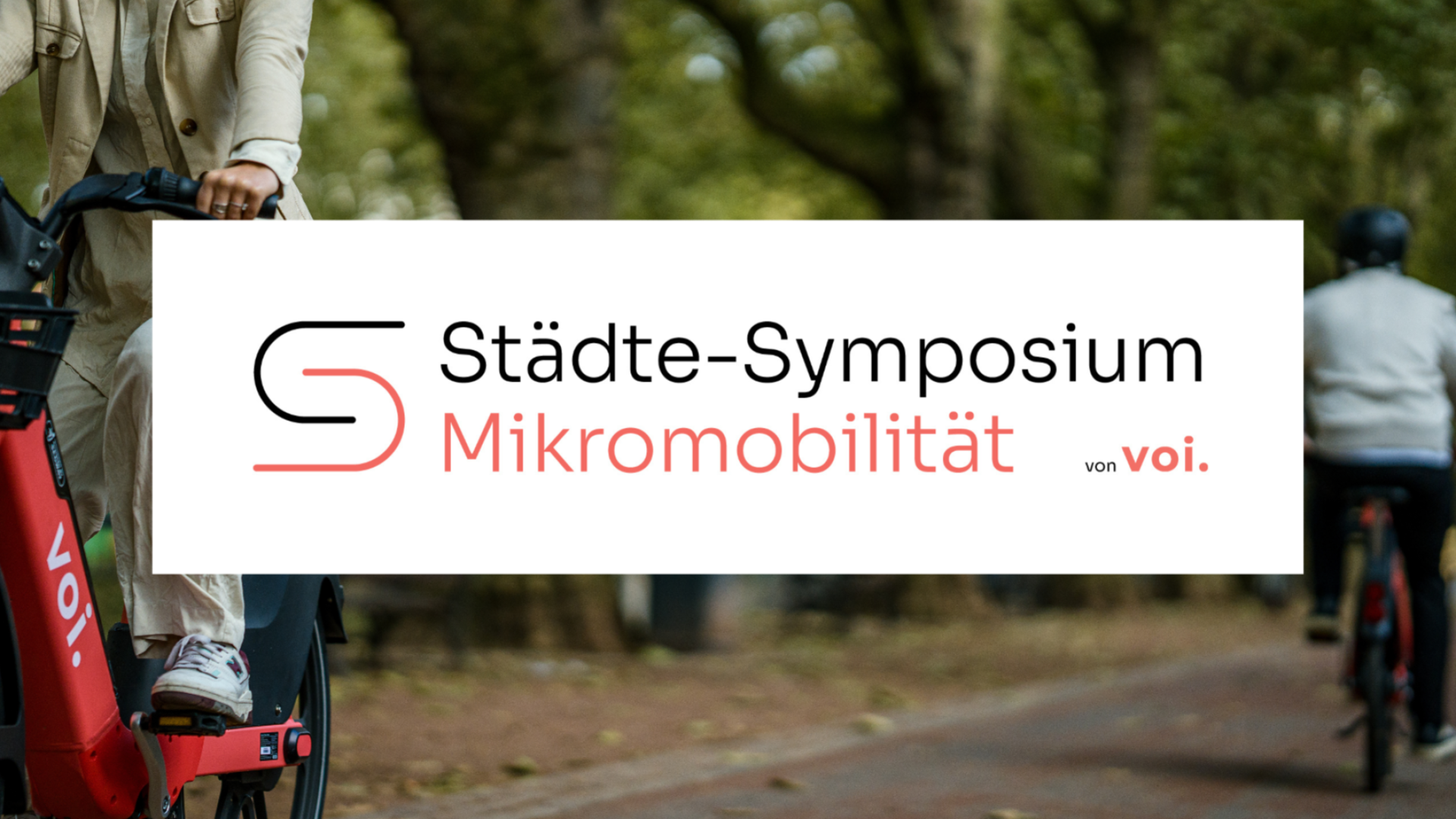Location, location, location: the benefits of hyper-accurate positioning in the Voiager 4 e-scooter
Feb 22, 2021

Location isn’t just a primary concern in the real estate market — location accuracy is of fundamental importance for e-scooter performance and service. We’re excited to delve into how the technology in our new e-scooter model, the Voiager 4 (V4), offers unparalleled positioning.
The centrepiece of the V4 is its all-new IoT (Internet of Things) hardware, the connected control hub of the e-scooter. Fully developed in house, it enables a range of safety and operational innovations, including high-accuracy positioning.
Why location matters
Location accuracy in micro-mobility vehicles is generally 15–30 metres, but the V4’s sub-metre positioning enhances navigation, ensures a scooter’s location corresponds precisely with where it appears in the Voi app, and improves geofencing for parking and riding zones.
Accurate geofencing — virtual geographic boundaries — is one of the top concerns for our partner cities because it has a direct effect on the safety and reliability of the e-scooter service. It determines where scooters can be ridden and parked, and even the maximum speeds that scooters can travel in certain areas. Our IoT unit plays a key role in ensuring the reading on the scooter’s location is accurate and that these location signals can then transmit to the Cloud quickly and efficiently, so command and response times to geofences are faster.
“This is important for safety reasons, so e-scooter riding and parking don’t cause problems in urban areas,” said Shahin Ghazinouri, our VP of hardware engineering. “Without location accuracy and strong signal responses, it’s hard to enforce geofencing. We’re continually improving responses to be as close to real time as possible.”
Location accuracy also helps to improve sustainability. Being able to pinpoint the location of our scooters enables us to better manage our fleets. In the event that a scooter is lost or stolen, precise positioning makes search-and rescue tasks easier and more effective, reducing our carbon footprint. It also helps us to optimise our maintenance operations, so we can find the shortest, most direct routes when we’re swapping e-scooter batteries or rebalancing our fleet.
How does the technology work?
Location technology is complex, so we’ll go back to basics. Location accuracy is reliant on the Global Navigation Satellite System (GNSS), a group of satellites providing signals from space that transmit positioning and timing data to GNSS receivers. These receivers then use this data to determine their location. GNSS includes all the navigation satellites that help connected devices to locate themselves.
GPS (Global Positioning System) is the American satellite navigation system, Russia’s is Glonass, China’s is Beidou, and Europe’s is Galileo. It’s now common for commercial GNSS receivers to make use of the entire constellation of navigation satellites.
However, various obstructions can interfere with and reduce the effectiveness of GNSS signals, which can dilute location accuracy. These obstructions can be caused by competing radio frequencies, atmospheric occurrences, tall trees or dense shrubbery, and “urban canyons”, in which tall buildings block signals.
To improve accuracy, our IoT compensates for lost or degraded GNSS (global navigation satellite system) signals in three ways. In an industry first, the IoT uses dual-band GNSS (L1 and L5 bands) — comparing and averaging the two signals minimises positioning errors, since each signal can be affected differently by urban canyons (e.g., tall buildings, trees) or atmospheric disruptions. The IoT also accesses corrections from the European Geostationary Navigation Overlay Service (EGNOS), the European Satellite-based Augmentation System (SBAS).
When GNSS-only positioning is difficult or impossible, the IoT uses a “dead reckoning” solution that combines information from various sensors (gyro sensor, accelerometer, scooter speed) to calculate the scooter’s current position.
“Dead reckoning calculates the scooter’s position without a lock on a GNSS signal, so we know where our scooters are, even when they’re in low-signal areas such as inside tunnels or buildings,” explained Ghazinouri. “Our solution is twofold: we’ve made improvements to location accuracy with GNSS positioning, but we also have a fallback with dead reckoning when we don’t have 100% satellite coverage.”
An e-scooter first: why Voi uses dual-band GNSS technology
Dual-band is one of the latest GNSS technologies to improve location accuracy. It significantly enhances positioning compared to older, single-band technology found in the majority of commercial navigation devices and cellphones.
GNSS satellites transmit on multiple frequencies or “bands.” Dual-band (or dual-frequency) GNSS technology enables a GNSS receiver to get two different GNSS signals at different frequencies from the constellation of satellites. In the case of GPS, the receiver will receive signals in the L1 and L5 bands, whereas it will receive signals in the E1 and E5a frequency bands from Galileo.
Various GNSS signal bands are on different frequencies and signal structures. Using multiple GNSS bands improves accuracy by reducing the effects of positioning errors. L5/E5a signals are lower in frequency, so they’re less prone to interference errors, like those caused by urban canyons, meaning they can provide better position accuracy in these circumstances than the L1/E1 signals. Receiving two separate location reference points from two separate signals enables the receiver to calculate a more accurate location.
Previously, dual-band GNSS receivers were used for sophisticated industrial applications. Space limitations for the receiver (a dual-band receiver requires greater surface area), insufficient L5/E5 band satellite coverage, and prohibitive costs of antennas and chipsets prevented wider adoption of dual-band GNSS technology, but it’s now making its way into the mass market.
In the V4, the antenna that receives the GNSS signals is located in the IoT hardware unit on the mast of the scooter. We’ve increased the antenna’s size by 433% from those in previous models; the receiver’s increased surface area gets a stronger signal, so we can get the most accurate read on an e-scooter’s location.
We hope this gives you some food for thought next time you’re riding a Voi — accurate location is essential for a great, safe ride!


